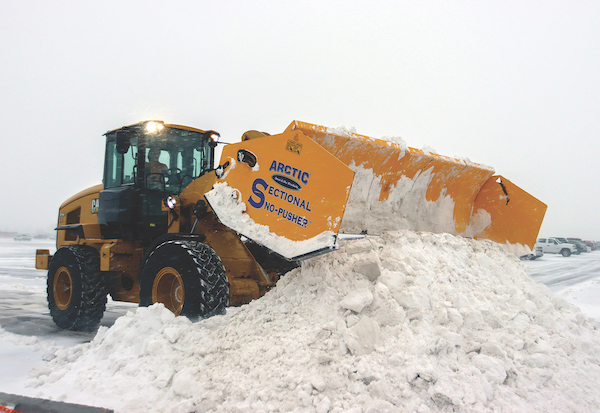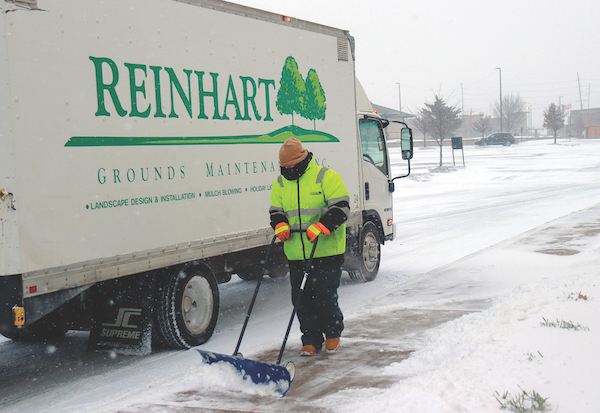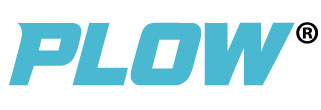By Todd Reinhart
From the August 2023 Issue Of PLOW®
Since 1986, Reinhart Landscaping & Snow has been plowing our way (literally) through the ever-changing snow removal industry, exploring every type of contract imaginable. Through trial and error (and a lot of seminars and conferences), we have used a wide variety of contracts from hourly to seasonal, then per-inch agreements, and every combination in between.
A few years ago, we were challenged by several of our commercial clients to produce a different type of snow contract that would help protect their budgets in a larger than average Winter snowfall season. So we set out to create a comprehensive solution to balance the inevitable uncertainties of unpredictable snow seasons. After several years working on the contract model, we came up with a different, but successful, approach. We named it the “Readiness Fee Contract.”

The Readiness Fee
This Readiness Fee model now forms the backbone of our snow strategy. In this approach, customers pay a monthly fee, which essentially reserves equipment exclusively for their property. But beyond the expense of just equipment rental/use, we factor in estimated fuel, repairs, staging/ pickup equipment, maintenance, etc. to provide a more realistic number of what it actually costs us to be ready for a snowfall all Winter long. These costs, excluding labor, are the Readiness Fee. (More on how labor is factored in later.)
The Readiness Fee contract is a game-changing tool in managing snowfall uncertainties. It shields the contractor from devastating losses during light snow seasons and offers customers financial relief during heavy snowfall.
However, the Readiness Fee Contract is by no means a universal remedy. Instead, it serves as a strategic tool to limit both the contractor’s and the customer’s financial exposure. It shines most prominently when used on properties requiring one or more pieces of dedicated equipment—a scenario that can be particularly burdensome during low snowfall seasons if the contractor has provided a straight per-inch contract to the client.
Let us delve into a hypothetical scenario, purely for illustrative purposes. Keep in mind, these are NOT REAL numbers! You need to produce your own numbers and develop your own pricing structure based on the following example.
Example #1: Per-Inch Contract
- Consider a skid steer and plow rental cost $3,500 per month for four months. The total seasonal rental would be $14,000.
- The contractor must cover the equipment rental (or use if owned) in each level of the per-inch pricing, hopefully considering the potential for a low-snow season.
- However, this pricing will be a significant hit to the client’s budget in a year of above-average snowfall, even though the equipment rental/use was covered already once the average snowfall was reached.
- Conversely, this contract type puts the contractor at a significant loss in a low- to-no snowfall year because the contractor must cover the cost of this equipment in the per-inch pricing. In this instance, since the in case of a snowfall all Winter, they take a significant financial loss.
Example #2: Per-Inch Contract With Readiness Fee
- We start by dividing the costs into fixed (Rental) and variable (Labor).
- Consider the same equipment from example #1. The seasonal rental rate would be $14,000.
- To cover the fixed cost—plus estimated fuel, repairs, staging/pickup equipment, maintenance, etc.—the price is marked up by a factor of the contractors’ choice. For this example, lets consider a factor of two times the rental. This yields the readiness fee of $28,000, which is then spread over the con- tract’s duration, billed monthly to the client. This Readiness Fee is paid by the customer irrespective of snowfall.
- Now, the primary variable left is labor, which is payable on actual snowfall events and the per-inch pricing. Since it’s the only major variable, this approach enables the contractor to offer a much lower per-inch price.
- In a heavy snowfall season, for instance, clients will see a significant reduction in their bills due to the lower per-inch cost, while contractors have already covered their equipment and operational costs.
The Readiness Fee contract, thus, serves as a game-changing tool in managing snowfall uncertainties. It shields the contractor from devastating losses during light snow seasons and offers customers financial relief during heavy snowfall. With its focus on dedicated equipment, it also promotes a more efficient and effective approach to snow removal. This win-win model is another tool in the arsenal of the contractor, allowing us all to weather financial uncertainties, no matter how heavy or light the snow.

Dedicated Equipment
In addition to less financial burden during heavy snowfall years, with a Readiness Fee Contract the customer also receives the assurance of dedicated equipment to their site.
In addition to less financial burden during heavy snowfall years, with a Readiness Fee Contract the customer also receives the assurance of dedicated equipment to their site. In our contracts, we guarantee that the equipment the customer is paying for is reserved exclusively for the customer’s property throughout the contract period. Thus, the contract ensures that, irrespective of snowfall conditions, site operations will not be disrupted due to the allocation of equipment to other properties.
This guaranteed service level is an invaluable peace of mind that the Readiness Fee Contract delivers to a customer. Additionally, it allows us to only sell the snow capacity that we have secured, limiting the overcommitment of resources. Once a con- tract is signed, equipment dedicated to that property is removed from our inventory. When all the capacity has been sold, the sales season is over.
Selling The Readiness Fee
Don’t miss this!
New Hampshire Salt Symposium
September 13, 2023
8:00 AM to 5:00 PM (ET)
Presented by SIMA & NH Department of Environmental Services, the New Hampshire Salt Symposium is a regional education, networking, and outdoor trade show event.
Snow and ice management managers, operators and municipalities from around the region won’t want to miss this year’s signature regional training and networking event.
Communicating the nuances and benefits of the Readiness Fee Contract to customers is paramount. It’s more than a standard transaction—it’s an investment in predictability and dedicated service, which requires a thorough explanation. As contractors, we must break down and explain the elements of the contract to the client: our fixed cost (readiness fee) and the variable cost (labor).
We should illustrate, with hypothetical scenarios, how the Readiness Fee Contract provides financial stability for both parties across varying snowfall conditions. It is crucial to highlight the security it offers—guaranteed equipment, faster response times, and reduced per-inch costs during heavy snow seasons.
Above all, we must emphasize that this is not merely a cost or expense—it is a commitment to their business continuity, safety, and operational efficiency. Using relatable language, numerical examples, and focusing on the value proposition can help customers see beyond the traditional contract structures and appreciate the win-win situation the Readiness Fee contract provides.
 Reinhart is the owner of Reinhart Landscaping & Snow in Bloomington, IL. Since 1987, the company has provided reliable, innovative landscaping services, including maintenance, design-build and bid-build, and snow removal. Today, the company uses robotics, automation, and green technology, including the use of battery-powered trimmers, brine application, paperless communication, autonomous mowing, geo-tagging, drone project monitoring, and more.
Reinhart is the owner of Reinhart Landscaping & Snow in Bloomington, IL. Since 1987, the company has provided reliable, innovative landscaping services, including maintenance, design-build and bid-build, and snow removal. Today, the company uses robotics, automation, and green technology, including the use of battery-powered trimmers, brine application, paperless communication, autonomous mowing, geo-tagging, drone project monitoring, and more.
Do you have a comment? Share your thoughts in the Comments section below, or send an e-mail to the Editor at cmenapace@groupc.com.











![[VIDEO] Dickies®: Discover Workwear That’s Anything But Uniform](https://turfmagazine.com/wp-content/uploads/2023/06/1647663814-4b1a2a7742790a9b1e97a3b963477850192e1d6a9dfba9b07214a77bae25d6e3-d-218x150.jpg)




























![[VIDEO] Dickies®: Discover Workwear That’s Anything But Uniform](https://turfmagazine.com/wp-content/uploads/2023/06/1647663814-4b1a2a7742790a9b1e97a3b963477850192e1d6a9dfba9b07214a77bae25d6e3-d-324x160.jpg)